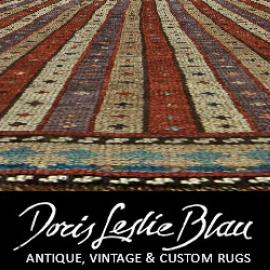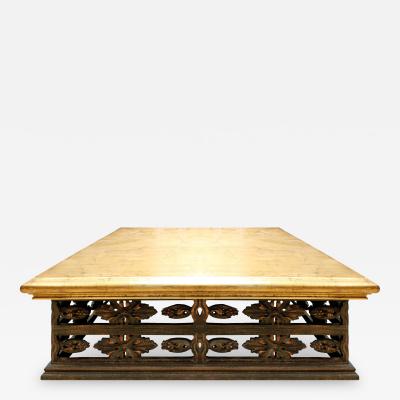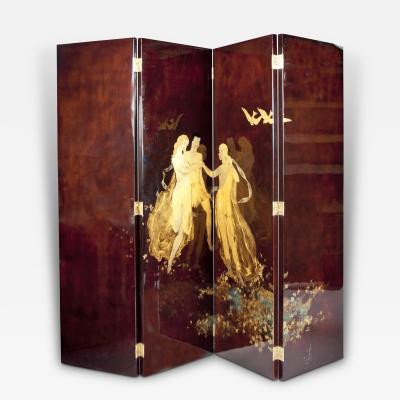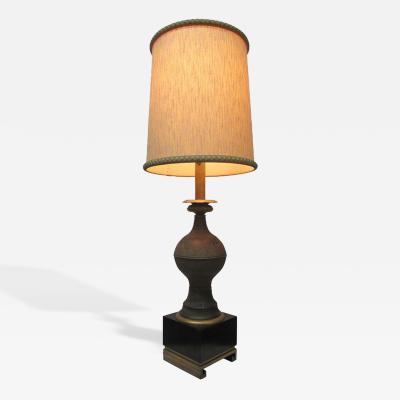Mid Century Modern Design Masters: James Mont
Leading Dealer Todd Merrill Discusses James Mont’s Singular Style
Honorary mafioso, Sing Sing inmate, friend to the stars -- mid century modern design master James Mont’s loud and lavish life could put a Hollywood drama to shame. His charismatic nature and opulent yet elegant style made him a favorite among celebrities, while his rebellious streak and penchant for excess earned him a reputation as the mob’s go-to guy. But it was Mont’s unwavering attention to detail, his unapologetic taste for luxury, and his masterful ability to incorporate classic elements into modern pieces that have cemented his legacy as a true pioneer of modern design.
Born in Istanbul, Mont’s Greek-Turkish family emigrated to the United States in 1922. After settling in Brooklyn, Mont opened a small electrical shop, where he sold hardware as well as lamps of his own design. After his work caught the eye of a local mobster, who acquired a few of his pieces, Mont’s career began to take off. He opened a waterfront lamp shop in Atlantic City and continued to rub shoulders with mafiosos, who were soon enlisting him to redecorate their homes. By 1932, Mont had established a successful design business as well as a storefront on Fifth Avenue, which was rumored to have been bankrolled by the mob. During prohibition, Mont began designing bars, including a brilliant collapsible home bar, which he patented. According to Todd Merrill, a New York-based dealer of mid-to-late 20th century design and studio furniture, “Mont was the mob’s clever boy. When the feds would come in and smash their gin joints to smithereens, they would call Mont, he would rebuild them and in twenty-four hours, they’d be back in business.”
Mont soon branched out and began designing a line of home furnishings. A succession of shops in Manhattan, Atlantic City, Amityville, Miami Beach, and even Greece, followed. Thanks to his fondness for the finer things, Mont was often dodging creditors and tax collectors and his long career saw a dizzying array of highs and lows (he declared bankruptcy three times). Mont’s personal life was equally as turbulent. In 1937, Mont married a twenty-five-year-old Korean-American actress named Helen Kim, who committed suicide less than a month after their wedding, landing him on the cover of the city's newspapers. In 1940, Mont was sentenced to five to ten years in Sing Sing penitentiary for assaulting a female business associate who subsequently took her own life.
Despite the tumult, Mont cultivated a style that was fascinating and distinct. “My first thought when I saw his work was, what is this? Where did it come from?,” says Merrill. “When you see a Mont for the first time, it’s completely different than any other maker. He stands out amongst them all. It’s almost tacky -- it really comes to the edge of good taste. But that’s what makes it fantastic and interesting.” Mont’s exotic and pioneering designs merged Chinoiserie, Art Deco, and an Ottoman-inspired aesthetic derived from his native Turkey, with decidedly modern proportions and simple silhouettes. “He coined the term Asian Modern,” says Merrill. “Chinoiserie has always been around, but it had never been applied to furniture and design with modern proportions.”
While he always leaned toward the glamorous and opulent, Mont’s style became more refined over the years, especially after his release from prison. Commanding, sleek, and elegant, his works from this time exude an alluring mix of glamour and exoticism. During this period, Mont launched Moderne Modes -- a five-story workshop and showroom that employed approximately fifty workers. By 1952, he was once again struggling financially and was forced to liquidate his inventory and sell his personal collection of Asian artwork. He went on to rebound and continued to receive commissions up until 1970.
Another hallmark of Mont’s work is exquisite craftsmanship, which manifested itself in his innovative and often labor-intensive finishing techniques. Merrill says, “There’s nobody who did finishes, carving or handwork like Mont. The insides of his drawers are solid oak and dovetailed, his finishes are cerused and layered in color, they’re accented by exceptional hardware.” The first Mont work that Merrill acquired, a cinnabar lacquered and gilded Chinoiserie console server, is a prime example of this dedication to artistry. The piece’s luscious surface was created by lacquering over a dozen polished layers and then gently sanding them to reveal a subtle luminosity.
Over the years, Mont's work has maintained a steady stream of interest from collectors. In the late 1990s, estates that Mont had decorated slowly started coming to market and with them came never-before-seen Mont pieces. In the early 2000s, Chinoiserie saw a rise in popularity and demand for Mont's work was on an upswing. “Designers like Kelly Wearstler started a buying a lot from us,” says Merrill. “As Chinoiserie faded, the market softened, but there are huge Mont fans that are unwavered by trends. Mont always sells well for us. When we put out a Mont sofa or club chairs, they’re gone immediately. His lamps are also always popular. It’s a truly worldwide market -- we’ve sold to collectors in Saudi Arabia, Israel, Paris, Hong Kong -- the decorative element is very appealing to a variety of audiences.” Merrill noted that as the Metropolitan Museum of Art’s Costume Institute readies for China: Through the Looking Glass (May 7-August 16, 2015), an exhibition dedicated to exploring the impact of Chinese aesthetics on Western design, there will likely be a renewed interest in Chinoiserie. “The magazines are all focused on what’s in for fall and they’re all talking about Asian influence and Chinoiserie,” he says. “I’m anticipating that we’ll have quite a bit of interest in Mont again.”





































